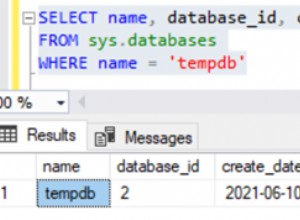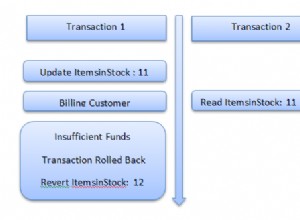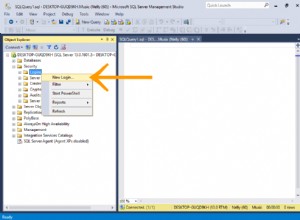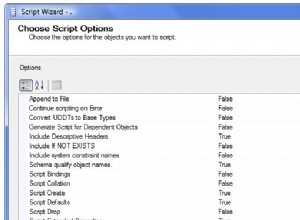Bien, volveré a agregar nuestro manejo de errores :-)
Las funciones ERROR_%() son visibles en el ámbito del bloque CATCH. Esto significa que puede usarlos en un proceso almacenado o llamada de función en cada bloque CATCH
Y con procesos almacenados anidados, es útil saber qué causó el error y qué está registrando el error
...
END TRY
BEGIN CATCH
IF XACT_STATE() <> 0 AND @starttrancount = 0
ROLLBACK TRANSACTION
EXEC dbo.MyExceptionHandler @@PROCID, @errmsg OUTPUT;
RAISERROR (@errmsg, 16, 1);
END CATCH
---with this handler (cut down version of ours)
CREATE PROCEDURE dbo.MyExceptionHandler
@CallerProcID int,
@ErrorMessage varchar(2000) OUTPUT
WITH EXECUTE AS OWNER --may be needed to get around metadata visibility issues of OBJECT_NAME
AS
SET NOCOUNT, XACT_ABORT ON;
BEGIN TRY
SET @ErrorMessage = --cutdown
CASE
WHEN @errproc = @callerproc THEN --Caller = error generator
--build up stuff
ELSE --Just append stuff --Nested error stack
END;
IF @@TRANCOUNT = 0
INSERT dbo.Exception (Who, TheError, WhatBy, LoggedBy)
VALUES (ORIGINAL_LOGIN()), RTRIM(ERROR_MESSAGE()), ERROR_PROCEDURE(), OBJECT_NAME(@CallerProcID));
END TRY
BEGIN CATCH
--and do what exactly?
END CATCH
GO
Esta es la idea básica de todos modos:cada bloque CATCH es simple, el trabajo continúa en el controlador de errores. Por ejemplo, agregar ERROR_NUMBER() si quieres




